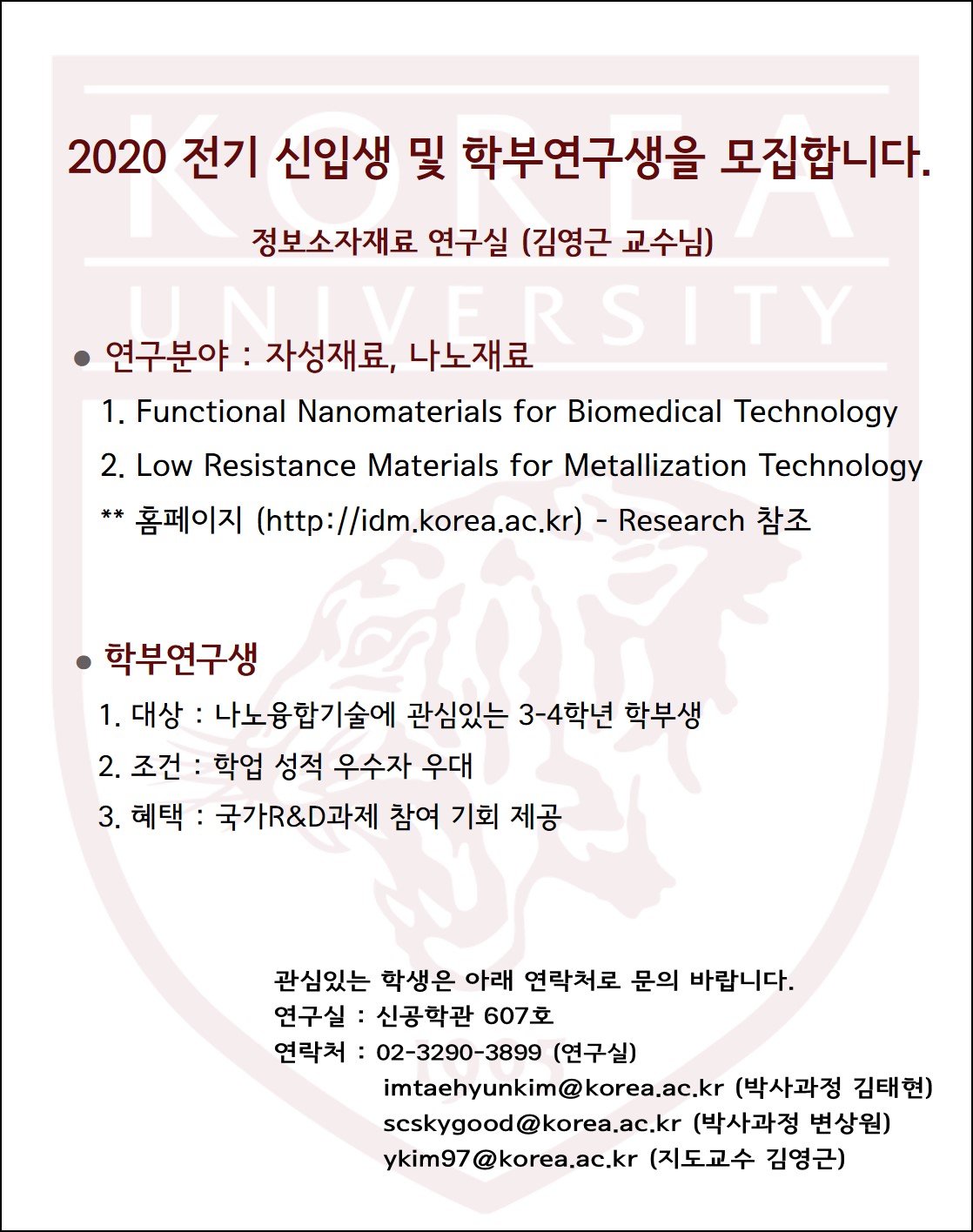
국내 연구진이 차세대 나트륨 전지의 성능을 대폭 향상시킬 수 있는 음극재 기술을 개발했다. 이론용량·가격 등의 한계가 존재하는 리튬이온전지를 대체할 새로운 이차전지 개발의 필요성이 요구되는 가운데, 고용량·저비용 나트륨 이온 전지의 상용화에 가속도가 붙을 것으로 전망된다.
고려대 신소재공학과 김영근·강용묵 교수 연구팀은 한국기초과학지원연구원(원장 신형식, 이하 KBSI) 서울서부센터 조지웅 박사 연구팀과 공동으로 수산화철(FeOOH)에 기능성 유기물인 아세테이트 분자가 결합된 유·무기 하이브리드 전극 소재를 이용해 충·방전 용량 2배 이상, 효율 30% 이상 개선시키는 기술을 개발했다.
연구결과는 재료과학분야 세계적 권위 학술지 Journal of Materials Chemistry A에 9월 12일 게재됐다.
차세대 나트륨 전지에서 나트륨 이온을 고용량으로 저장·방출할 수 있는 전극 소재로, 경제성이 높은 수산화철이 각광받고 있다. 그러나, 수산화철은 원자 반경이 큰 나트륨 이온의 특성상 화학반응 및 전환반응 과정에서 수반되는 철이온의 급격한 산화수 변화와 결정구조의 불안정이 존재한다. 이로 인해, 전기화학 반응의 비가역성이 커지게 되고 이론용량보다 실제용량이 떨어지는 기술적 한계가 있었다.
이러한 불완전한 반응의 한계를 극복하고자, 수산화철-아세테이트 혼합 하이브리드 전극 구조를 개발하고 자연 상태에서의 생물학적인 철(Fe)의 산화-환원 반응을 모사했다. 이를 통해 전환반응 과정에서 발생하는 철 이온의 급격한 산화수 변화를 제어하고 안정적인 화학 반응을 유도해, 나트륨 이온과의 전기화학 반응을 가역적으로 만드는 데 성공했다.
공동연구팀은 수산화철과 아세테이트 성분을 층상구조 방식으로 결합했다. 층층이 쌓인 격자상수가 확장된 형태의 결정구조는 층간 간격을 더 크게 확보할 수 있게 돼, 리튬보다 원자 반경이 큰 나트륨 원자의 탈리·삽입을 쉽게 한다. 결과적으로, 후속 방전-충전 주기 동안 아세테이트와 수산화철의 산화-환원 결합으로 인해 생성된 탄산염은 나트륨 이온의 저장을 위한 안정적·가역적인 중심 창구 역할을 하게 된다.
이와 같이, 수산화철의 환원과 아세테이트의 산화가 결합된 반응은 자연 상태에서 보여지는 생물학적인 철의 산화-환원 반응 기작과 유사하다. 하이브리드 구조에서 무기물과 유기물이 상호 작용하는 산화-환원 반응을 통해 가역적인 전환 반응을 가능하게 함은 물론, 순수한 수산화철을 전극 소재로 사용했을 때에 비해 충방전 효율을 30% 이상, 용량은 100% 이상 증가시키는 등 나트륨 전지의 성능을 최고 수준으로 끌어올린 의미가 있다.
이러한 전극 구조의 폭넓은 활용을 통해 상용화가 가능한 수준의 고용량, 저비용 차세대 나트륨 전지 개발은 물론, 현재 상용화 중인 리튬이온전지의 성능을 획기적으로 높일 수 있는 고용량, 고안정성 전극소재 개발도 가능할 것으로 기대된다.
고려대 김영근 교수 연구팀과 박범철 박사는 본 연구의 초기 아이디어를 확보해 각 실험에 필요한 시료준비 및 연구총괄을 맡았다. 고려대 강용묵 교수 연구팀은 유·무기 하이브리드 전극의 전기화학적 특성을 분석했다. KBSI 조지웅 박사 연구팀은 유·무기 하이브리드 전극의 충·방전 과정에서 발생하는 결정구조의 변화를 실시간 분석할 수 있는 in-situ XRD 분석법과 투과전자현미경을 활용해 결정구조의 변화를 정밀하게 분석했다.
고려대 강용묵 교수는 “전기화학적 반응을 통해 더 높은 에너지 밀도를 달성할 수 있는 전극 소재에 대한 관심이 커지고 있는 상황”이라며, “유기물의 반응을 결합시켜 전환 반응을 가역적으로 만드는 시도는 향후 고에너지 밀도의 전극 소재를 개발하는 데 있어, 새로운 접근방법을 제시해줄 수 있을 것 같다”고 이번 연구 의의를 설명했다.
KBSI 조지웅 박사는 “이번 연구는 자연에 존재하는 화학 반응을 모사해, 이차전지 전극소재 개발에 적용한 매우 의미있는 연구결과”라며, “앞으로도 전극 물질의 결정구조 변화를 실시간 관찰할 수 있는 분석기술의 다양한 활용을 통해 상용화 단계의 에너지 전환 및 저장에 필요한 신소재 개발에 기여할 수 있도록 힘쓸 것”이라고 말했다.
이번 연구결과는 과학기술정보통신부와 한국연구재단이 추진하는 기본연구사업과 과학기술정보통신부 과학기술일자리진흥원 연구장비 핵심기술개발사업의 지원으로 진행됐다.


출처: 고대뉴스, 2022.10.12,
https://www.korea.ac.kr/user/boardList.do?boardId=474633&siteId=university&page=1&id=university_060108000000&boardSeq=493686&command=albumView
Bioinspired redox-coupled conversion reaction in FeOOH-acetate hybrid nanoplatelets for Na ion battery
J. Mater. Chem. A 10, 17740
[DOI: https://doi.org/10.1039/D2TA04990B]
The considerable interest in rechargeable batteries is causing a rapid increase in demand and a surge in the price of raw materials. Earth-abundant iron oxyhydroxide (FeOOH) is a promising candidate as an anode material for sodium-ion rechargeable batteries (SIBs). However, the application of FeOOH is hindered by numerous technical limitations arising mainly from the irreversibility of the conversion reaction. Here, we manipulate biotic Fe redox from FeOOH-acetate hybrid nanoplatelets (FAHPs) to make the resulting conversion reaction with Na ions highly reversible. The extended lepidocrocite-type FAHP, in which FeOOH and acetate components are stacked in a layer-by-layer assembly, undergoes facile initial intercalation owing to its large interlayer spacing. Consequently, the redox reaction coupled with FeOOH reduction and acetate oxidation occurs in a similar way to the biotic Fe redox reaction. During the subsequent discharge–charge cycles, carbonate produced by the redox coupling of acetate and FeOOH serves as a stable and reversible host for Na ion storage. This study establishes a novel method for enabling highly reversible conversion reactions and enhancing the electrochemical capacity using not only Na ions but Li ions through the exploitation of the interplaying redox of inorganic and organic materials in hybrid structures.











